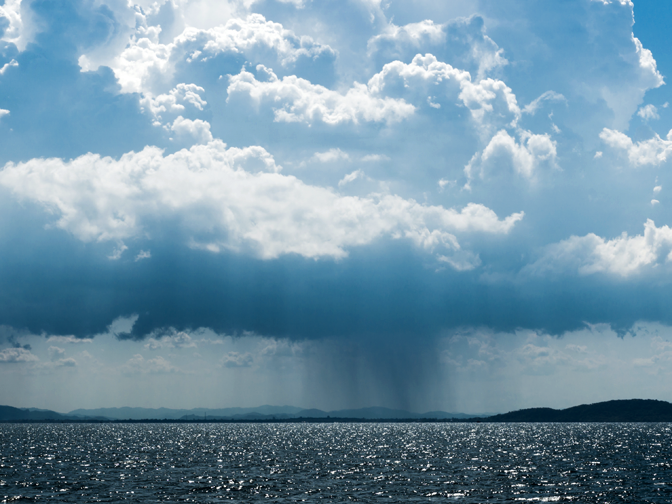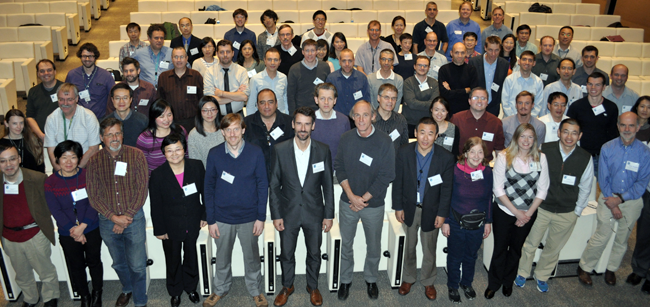

Scientists attending an international workshop co-organised by ECMWF have reviewed progress and challenges in using satellite observations relating to clouds and precipitation in numerical weather prediction (NWP).
The JCSDA-ECMWF workshop on Assimilating Satellite Observations of Clouds and Precipitation into NWP Models took place at College Park in Washington from 1 to 3 December.
It followed previous events at ECMWF in 2010 and at JCSDA in 2005. The decision to hold a third workshop was prompted by a recommendation from the International Precipitation Working Group.
The meeting was co-chaired by Thomas Auligne (Director of JCSDA) and Stephen English (ECMWF).
“This productive workshop was successful – and perhaps unique – in bringing together many experts working on cloud and precipitation assimilation in NWP,” Dr English said.
Many centres are now actively working towards radiance assimilation in an all-sky framework, partly inspired by ECMWF's all-sky microwave assimilation, which is already operational. Several centres are beginning to think about active observations (radar and lidar), an area in which ECMWF also has an ongoing interest.
There were 98 participants, mostly from the United States but also from the UK, Germany, France and Japan. In addition to Dr English, Elias Holm and Alan Geer attended the event for ECMWF.
Three themes
The workshop was split into three main themes: forecast model developments; data assimilation methodology; and observations and radiative transfer.
Regarding model development, there was a call for more interaction between scientists working on cloud and rain assimilation and those developing improved model components, especially in the physics part. The meeting noted examples where this has worked very well at ECMWF, for example in relation to the treatment of supercooled water.
In the data assimilation discussions, it was appreciated how much progress has been made since the last meeting in 2010. It was observed that uncertainty in the physics both of the model and the observation operators could be modelled more accurately in ensemble methods than is currently the case.
The workshop noted with interest proposals for future active instruments as well as enhanced infrared capabilities from geostationary orbit. However, participants also expressed concern about the lack of future provision of microwave imagers and longer-term plans for active sensors.

The workshop brought together scientists from the US, the UK, Germany, France and Japan.
The workshop recognised that improvements are still needed in the characterisation of scattering parameters and their associated uncertainty. It encouraged JCSDA and ECMWF to engage with a workshop on scattering databases to be held in Bologna, Italy, from 3 to 7 October 2016, hosted by CNR-ISAC and jointly sponsored by the GEWEX, CloudSat and GPM missions.
Finally, the workshop recognised the need for improved access to tools to simulate cloud-affected observations. This could be achieved, for example, through the integration of improved operators for visible and active observations into models such as CRTM and RTTOV, and through tools such as the NWPSAF radiance simulator, which may facilitate the evaluation of the significance of model changes for observation assimilation.
Noting the rapid rate of developments in this area in the last five years, in particular at ECMWF, and also noting the growing number of centres now actively involved in related research and development, it was proposed to break with the previous five-year cycle for these meetings and to hold the next joint workshop at ECMWF in around three to four years’ time.
Top photo: MILANTE/iStock/Thinkstock
